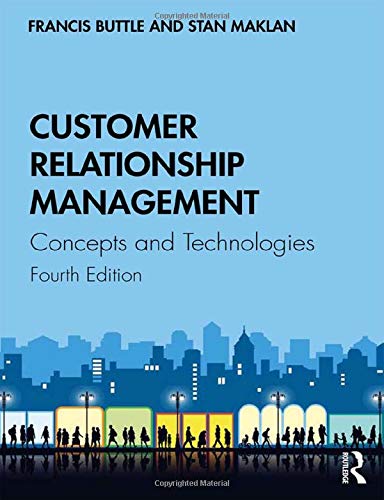
Here are tips for coping with a tense situation and hopefully resolving it to everyone’s satisfaction: Dealing With Angry Customers
Your customer wants to know that you are willing to work on the problem and aren’t going to run for the door. Start with a positive statement such as ‘We’re going to solve this together’. It will help them feel reassured about the resolution process.
1. Don’t take it personally. Remember, the customer is not angry with you, they are displeased with the performance of your product or the quality of the service you provide. Your personal feelings are beside the point.
2. Remain calm. When a customer starts yelling or being otherwise rude, there is nothing to be gained by responding in a similar manner.
In fact, that will probably escalate hostilities. Maintain control of yourself, even if the customer’s tirade makes you feeling like yelling yourself.
3. Use your best listening skills. The first thing an angry customer wants is to vent. To do so, they need someone to listen—and, for better or worse, you are that person. Listening patiently can defuse a situation, as long as the customer feels acknowledged in his or her complaint.
Hear them out. When they are done talking, summarize what you’ve heard and ask any questions to further clarify their complaint. Body language can be critically important here. Keep eye contact.
Stand or sit up straight. Keep your arms uncrossed. Show how closely you’re paying attention to their problem.
4. Actively sympathize. After the customer vents, he wants to know you understand where he’s coming from and how he or she feels.
Express sympathy for their unpleasant customer experience.
Respect and understanding go a long way toward smoothing things over.
5. Apologize gracefully. Whether the customer’s complaint is legitimate or not is really irrelevant. If you want her to stay a customer, you need to express an apology for the problem they are having (or perceive to be having).
A simple, straightforward statement is often all that’s needed: “I’m sorry you’re not happy with our product.
Let’s see what we can do to make things right.”
6. Find a solution. Once you understand why the customer is unhappy, it is time to offer a solution.
Ask him what he feels should be done or put forward your own fair and realistic answer to the problem.
In most cases, that’s all the customer is looking for—and may result in providing some degree of satisfaction.
7. Take a few minutes on your own. After the situation has been resolved and the customer is on her way, it’s helpful for you to take your own “time-out.” Even if you’ve handled the situation in the most professional way possible,
it’s still a stressful experience. Rather than let that stress linger inside you, take a short walk, treat yourself to a snack or find someone to talk to who makes you laugh. Then you’ll be ready to once again engage with your customers.
8.Smile When You Talk and Apologize for the situation More often than not, the customer would be angry about something that was never under your control.
The human tendency is to shrug shoulders off the blame.
A company might respond to an infuriated customer saying it was not their fault. All this does is shake the faith the customer has in your company.
Dealing With Angry Customers
Sometime You Need To Transfer/Refer The Customer To Someone Else
The customer has an issue that is outside your area of expertise, but you think you know who can take care of their problem for them.
How do you transfer or refer them to that other person without making the customer feel like they are being brushed off or ignored?
Best Tips:
The response is to externalize a sense of confidence that you can pass on to them. Instead of a deflated-sounding line like “I’m not sure, let me go ask someone else,” use positive language like “we have a team member who is great at solving problems like these; let me refer you to them.
” Whenever possible, fill in your colleague about the details of the customer’s problem, so there is a limited amount of repetition on the customer’s part.
They will appreciate you saving them the time and trouble of explaining their issue all over again.
When The Customer Is Overdue on a Payment
It’s been a little while since payment was due and you haven’t heard anything from the customer.
Before sending things off to a collections department or outside collections agency, take the opportunity to follow-up one last time by phone or email (or both).
Unless there are outside circumstances to show otherwise, a lack of payment could just be an honest mistake or simple forgetfulness on the part of the customer.
Having that extra communication shows you care about the customer and aren’t simply looking for another payday.
How to deal when Customer Wants A Full Refund
You have tried other means of attempting to remedy a customer’s issue and they still demand a refund.
The best course of action usually is to provide a refund. It can be a distressing situation to be in as a businessperson,
but you should be prepared for it.
Apologize to the customer,
let them know you are placing a refund request, and let them know how long it should take before they see the money back in their account.
How to deal with Very Angry Customer
When a customer is extremely angry, it can be the most difficult customer to work with because emotions are so high.
At times, a customer is just so upset, there is no way to immediately respond.
The key here is to listen.
Any answer at this point may just be seen as an excuse, especially if this is an ongoing problem.
Give the customer a chance to vent their frustration, and as mentioned above, try not to take it personally.
Apologize, as always.
Let them know you understand that they are aggravated and frustrated.
You must accept some responsibility for the way they are feeling, as a representative of your business or product.
Don’t get caught in the wave of anger. Speak slowly and calmly; do not raise your voice.
If possible, immediately begin work on some kind of solution and let them know you are making it a priority.
Product Placement
Product placement during television shows or movies is probably the most expensive of all direct sales methods, but it is tremendously effective.
Your product will be seen in action by a huge number of people.
If your product is used or owned by a character, it gives your brand greatly-increased marketability.
With so many brick-and-mortar locations that could sell your product — and all the fairs, expos,
and other events that count your intended market as its attendees — it’s important to conduct research on which places would be interested in having your product ready for them.
Store Displays
If your product is in stores, then consider a store display. A welcoming visual will draws eyes to your product so that they can leave the store with it and tell their friends about it.
Event Marketing
What kinds of events has research shown that your target market attends? Concerts, science fiction conventions, industry soirees or charity shows are wonderful methods to build brand awareness.
There are as many ways to sell your product as there are people who want to buy it. A multifaceted marketing approach designed to fully saturate the market enable people the opportunity to find out what your product is, where to buy it and why they want it. Choose several or all of these ideas to show everyone what you have to offer.
SMS Marketing
Best Bulk sms marketing in india. 100% instant delivery. Marketing routes. Promotional and Transaction routes. Contact Today.
Discover of Solutions can Develop any type of SMS Software and android application according to your business requirements visit and contact support www.discoverofsolutions.com
Customer Relationship Management, Fourth Edition continues to be the go-to CRM guide explaining with unrivalled clarity what CRM is, its uses, benefits and implementation.

Customer Relationship Management: Concepts and Technologies Paperback
Buttle and Maklan take a managerial perspective to track the role of CRM throughout the customer journey stages of acquisition, retention and development. Theoretically sound and managerially relevant, the book is liberally illustrated with examples of technology applications that support marketing, sales and service teams as they interact with customers, but assumes no deep technical knowledge on the reader’s part.
The book is structured around three core types of CRM – strategic, operational and analytical – and throughout each chapter, case illustrations of CRM in practice and images of CRM software demystify the technicalities.
Ideal as a core textbook for advanced undergraduate and postgraduate students on CRM or related courses such as relationship marketing,
digital marketing, customer experience management or key account management, the book is equally valuable to industry professionals,
managers involved in CRM programs and those pursuing professional qualifications or accreditation in marketing, sales or service management.
NEW TO THIS EDITION:
- Artificial intelligence (AI)
- Fully updated to reflect the evolving CRM landscape, including extended coverage of:
- Big data and its influence on CRM
- Advances in CRM analytics
- The relationships between CRM and customer experience management
- The role of social media in customer management strategy
- Real-time marketing
- Chatbots and innovative customer self-service
- Privacy and data security.
- Updated lecturer support materials online.
NOTE: Your Customer Is Your Boss, Here Are 21 Ways You Can Impress Him
Read this Marketing Tips can help you to grow you business
